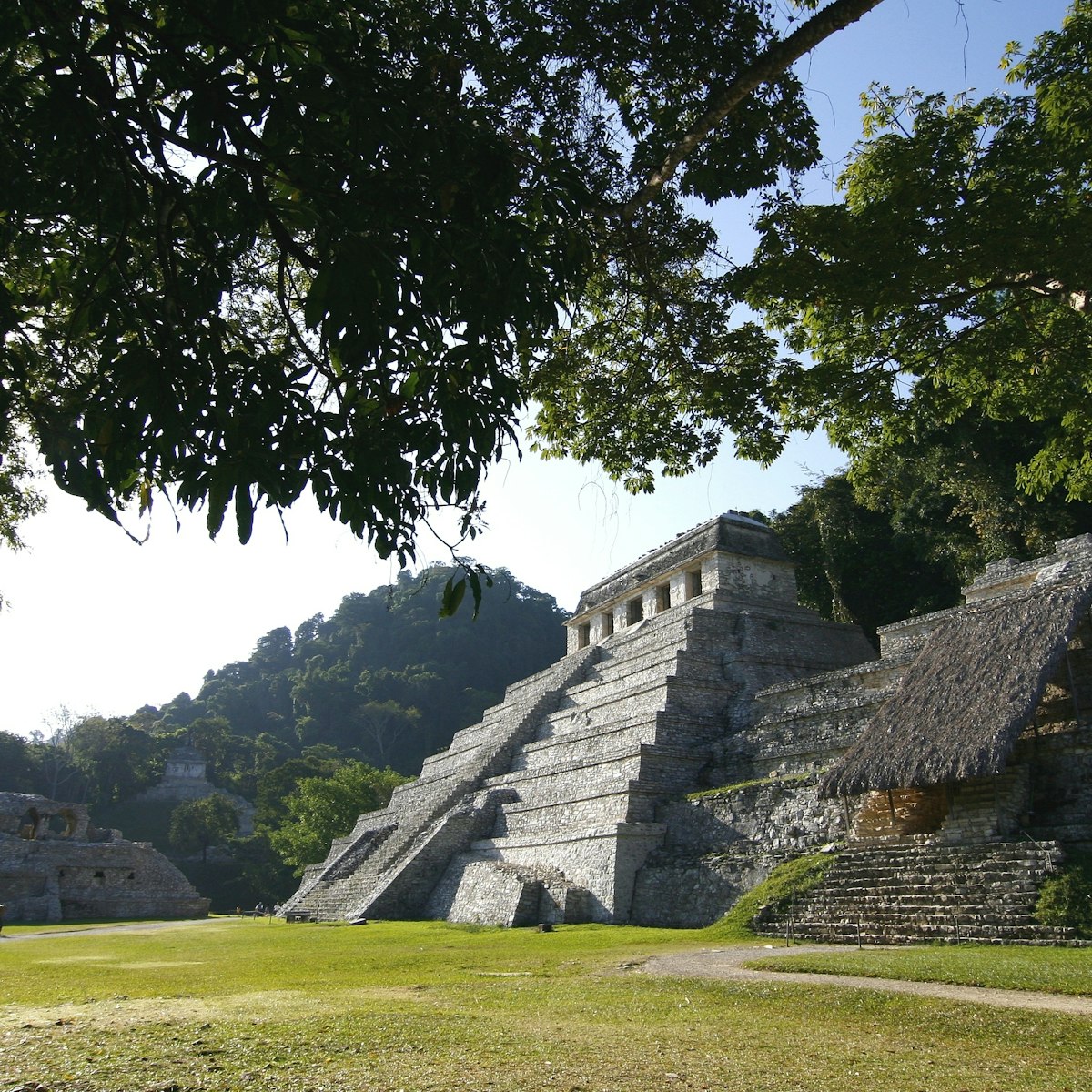Pakal’s son, Kan B’alam II, was a prolific builder, and soon after the death of his father started designing the temples of the Grupo de las Cruces (Group of the Crosses). All three main pyramid-shaped structures surround a plaza southeast of the Templo de las Inscripciones. They were all dedicated in AD 692 as a spiritual focal point for Palenque’s triad of patron deities.
The Templo del Sol, on the west side of the plaza, has the best-preserved roofcomb at Palenque. Carvings inside, commemorating Kan B’alam’s birth in AD 635 and accession in 684, show him facing his father. Some view this beautiful building as sure proof that Palenque’s ancient architects were inspired by the local hallucinogenic mushrooms. Make up your own mind!
Steep steps climb to the Templo de la Cruz, the largest and most elegantly proportioned in this group. The stone tablet in the central sanctuary shows the lord of the underworld smoking tobacco on the right and Kan B’alam in full royal attire on the left. Behind is a reproduction of a panel depicting Kan B’alam’s accession.
On the Templo de la Cruz Foliada, the corbel arches are fully exposed, revealing how Palenque’s architects designed these buildings. A well-preserved inscribed tablet shows a king (probably Pakal) with a sun shield emblazoned on his chest, corn growing from his shoulder blades, and the sacred quetzal bird on his head.
The ‘cross’ carvings in some buildings here symbolize the ceiba tree, which in Maya belief held up the universe.




